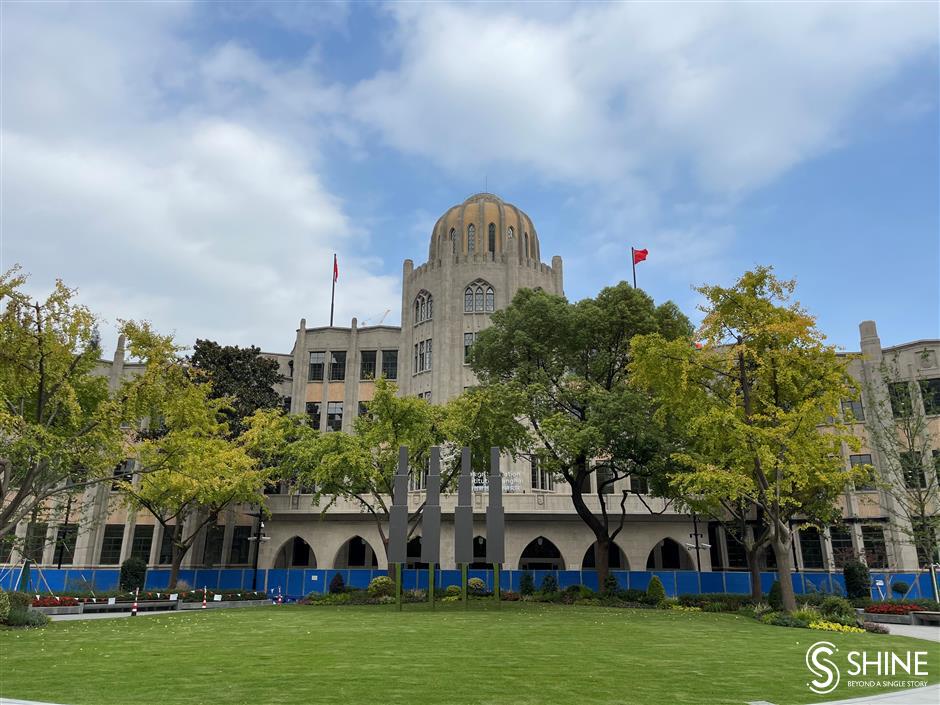
The Henry Lester Institute of Technical Education at 505 East Changzhi Road.
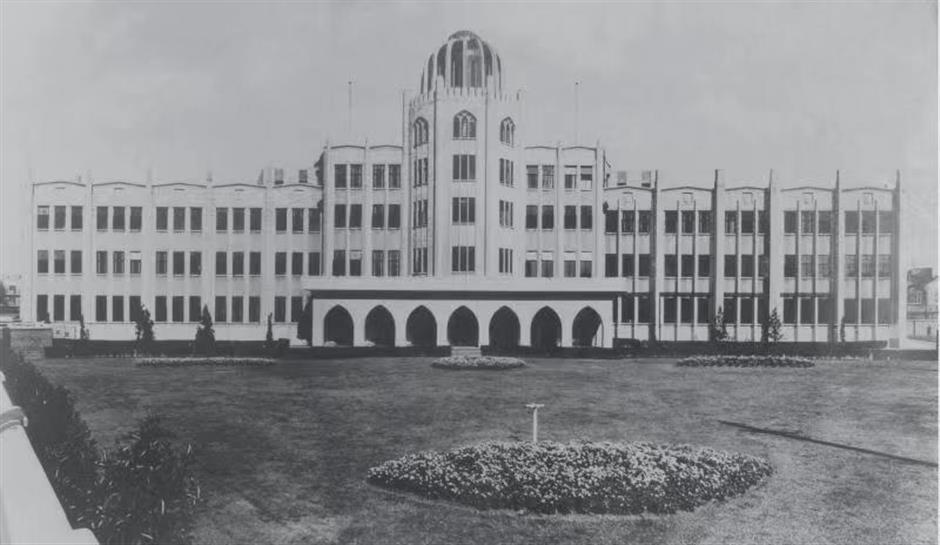 Ti Gong
Ti GongA file photo of the Henry Lester Institute of Technical Education at 505 East Changzhi Road.
An 88-year-old building, one of Shanghai's earliest technical schools finished its renovation on Thursday, with the original decor largely preserved and historical look fully restored.
The Henry Lester Institute of Technical Education at 505 East Changzhi Road on the North Bund of Hongkou District will become the Design Innovation Institute Shanghai, attracting top talent in design.
Over 70 percent of the original decor and features of the building have been preserved, including over 1,000 wall tiles, along with the double-layer windows, steel doors and wooden strip floors, an official from the North Bund Development Group in charge of renovations, told Shanghai Daily.
The facelift project was launched in December 2021 to restore the original look of the classrooms, dormitory, auditorium, library, museum, labs, canteen and headmaster's room.
The building, blending Gothic Revival and Art-Deco architecture, features a five story central tower, four and three stories on both of the wing buildings, and resemble a sailing ship or jet when seen from an aerial view.
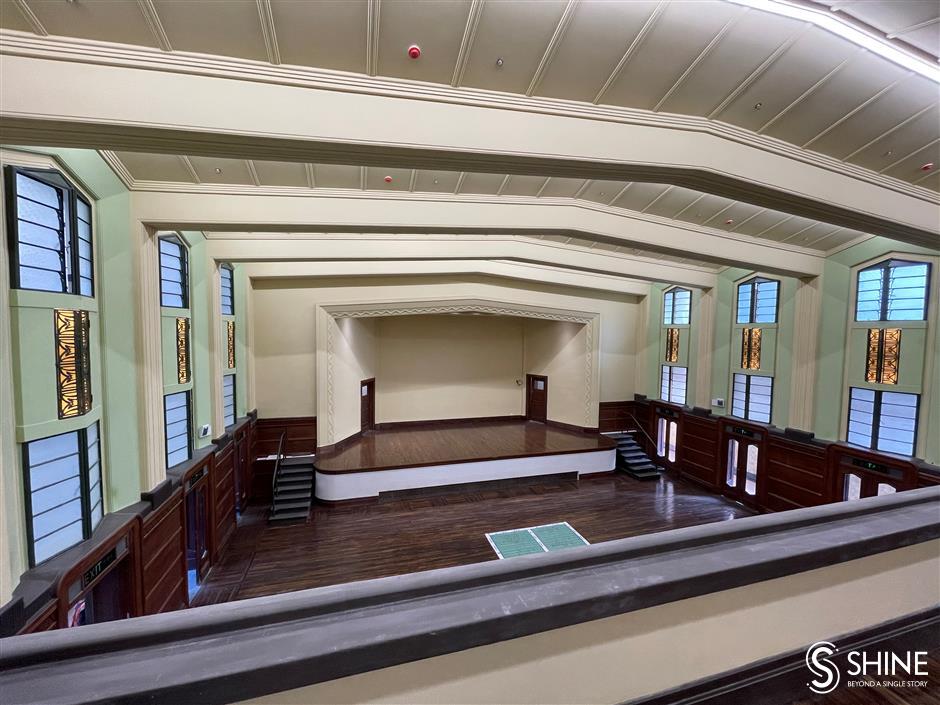 Yang Jian / SHINE
Yang Jian / SHINEThe preserved auditorium of the school.
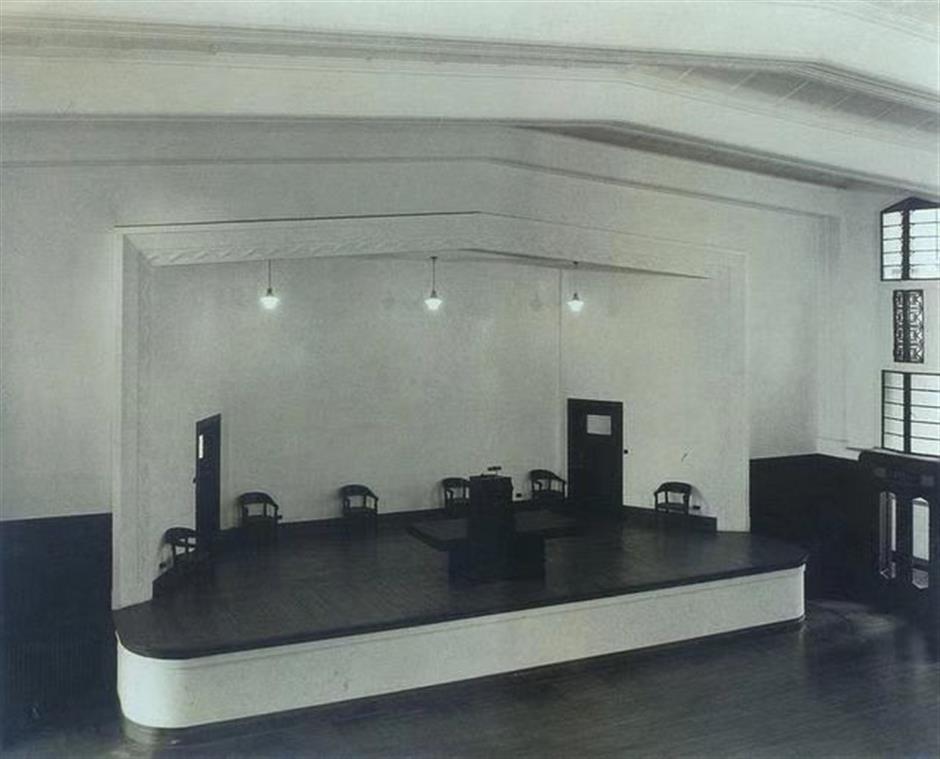 Ti Gong
Ti GongAn old photo of the original auditorium.
It was built in 1934 in accordance with the will of British tycoon Henry Lester (1840–1926), one of the richest merchants in Shanghai, commissioning a school for at least 300 Chinese and foreign students.
Before he died in 1926, Lester, who had no children, donated almost all his assets to build the Lester Chinese Hospital, the Henry Lester Institute of Medical Research and the institute, along with other philanthropic projects. His charity foundation is still supporting Chinese postgraduates in architecture in the United Kingdom.
Though the institute had operated for only a decade until the outbreak of World War II in 1945, it had cultivated multiple leading professionals, including Gu Maoxiang, a member of the Chinese Academy of Engineering, Chen Zhanxiang, the former chief engineer of China's Ministry of Urban-Rural Construction, and famous translator Cao Ying.
One of the centers unique characteristics was that teachers used no textbooks, and encouraged students to take notes and gain more practical knowledge. It was one of the best engineering colleges in Shanghai then, on par with Jiao Tong and St. John's universities.
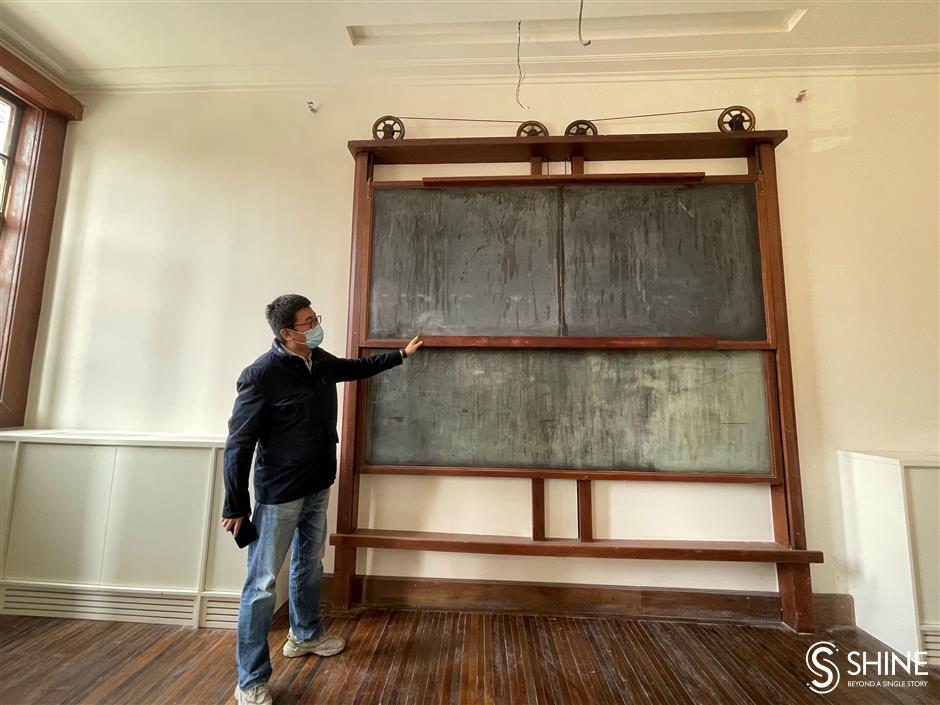 Yang Jian / SHINE
Yang Jian / SHINEAn engineer moves the original blackboard in the terrace classroom.
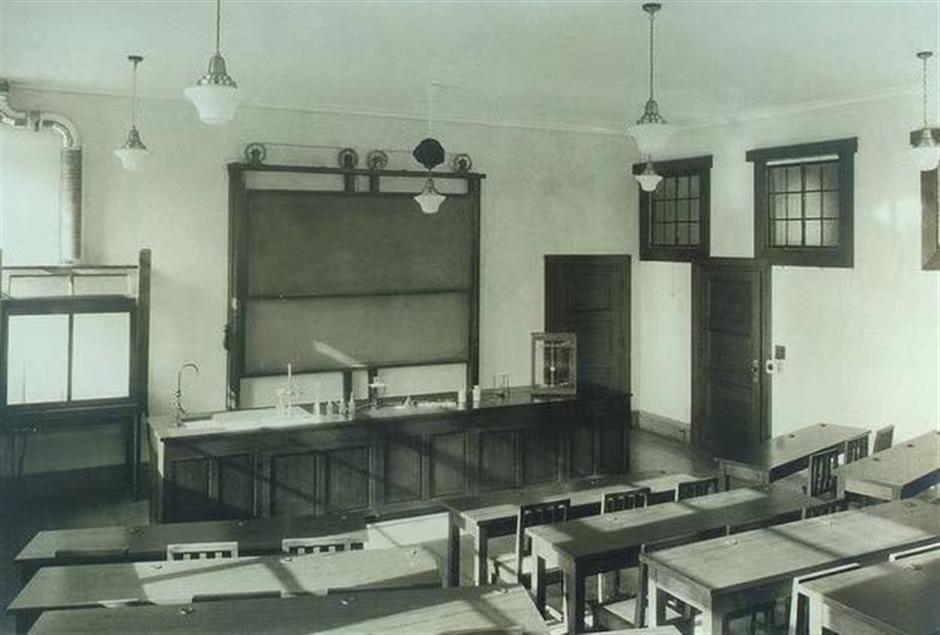 Ti Gong
Ti GongAn old photo of a blackboard in an original classroom.
The institute was occupied by Japanese invaders in 1942. After the war, it was converted into a maritime technical school and later become the Shanghai Seaman Hospital mainly for domestic and foreign sailors until the recent decade. It was listed as a protected building by the city government in 1994.
"The building was relatively well-protected, so we've tried our best to keep the original features. Only the broken or missing parts were recreated with the same materials and techniques," said the official.
The steel gates of the building, which have patterns of compasses, balances and beakers, were replicated according to the original gates which are collected at the Shanghai History Museum.
A blackboard with two pulleys on the top dates back to 1930. Though the glass on the surface has cracked, the engineers kept the original staff as a "memory of its history," he said.
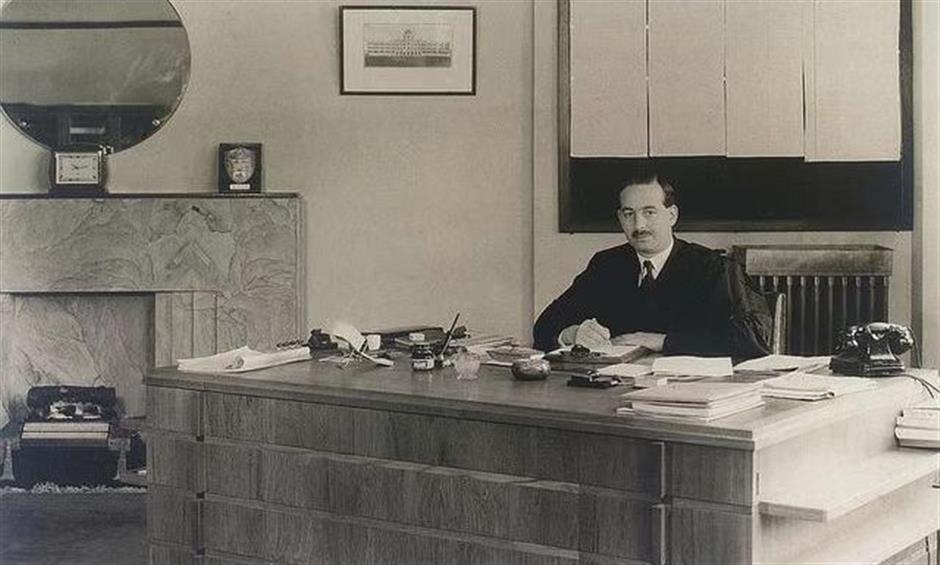 Ti Gong
Ti GongThe headmaster of the school poses in his office.
The ceiling of a conference room and the walls of a former painting room are exposed without any paint to showcase the traditional techniques, which are rarely seen nowadays.
Many senior masons and carpenters were invited to refurbish the original doors and tiles.
"We only changed the bronze bolts and hinges, but retained the wooden parts of each door," said Wang Liang, a senior carpenter from central China's Hunan Province.
Even several old arbor trees have been kept in the garden in front of the building, along with the foundation stone laid by the China's Ministry of Education Dr Wang Shijie and former Consul General of Britain in Shanghai John Brenan.
Standing on the balcony of the former headmaster's room, visitors can see both the preserved exterior walls of the institute and landmarks of the North Bund waterfront, such as the towering Sinar Mas Plaza, known as the tallest building in Puxi.
The future design institute plans to conduct wide international exchanges and public education on design and innovation sectors. It's expected to become an innovation engine for Shanghai's sustainable development, according to the Hongkou government.
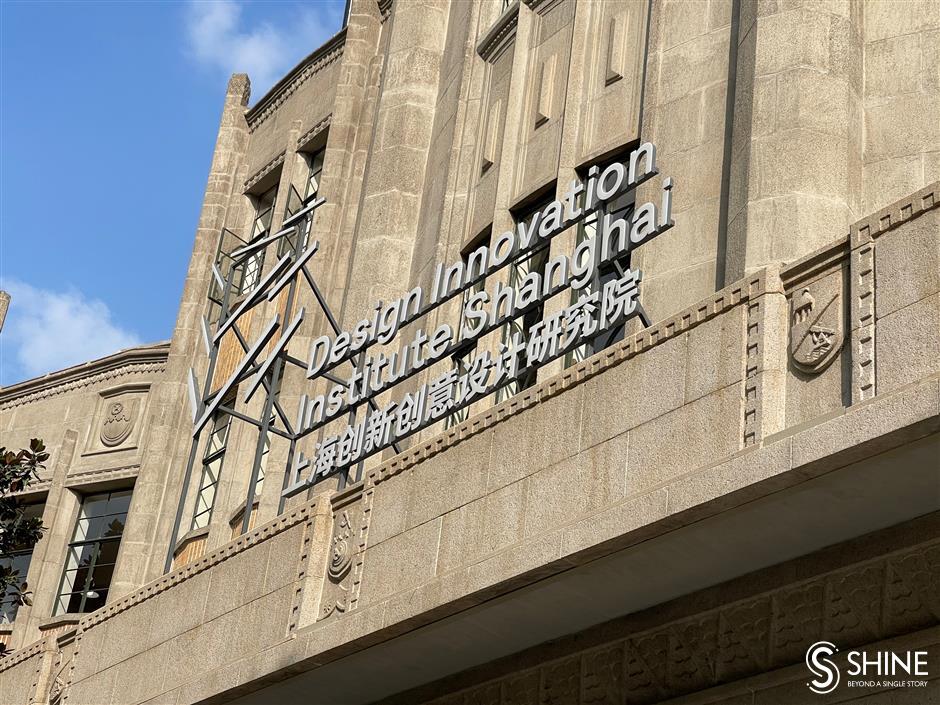 Yang Jian / SHINE
Yang Jian / SHINEThe building will become the Design Innovation Institute Shanghai.
